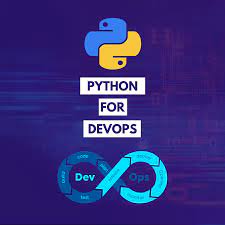Python Libraries for DevOps
 ashwini purwat
ashwini purwat
Python libraries that every Python developer should know.
1. NumPy
NumPy (Numerical Python) is the foundational package for numerical computing in Python. It provides a high-performance multidimensional array object, and tools for working with these arrays. It is especially useful for mathematical and logical operations, Fourier transforms, random number capabilities, and much more.
COPY
COPY
import numpy as np
a = np.array([1, 2, 3])
print(a)
2. Pandas
Pandas is a library built on top of NumPy, offering data structures and data manipulation tools to make data cleaning and analysis fast and easy in Python. It provides data structures like Series and Data Frame, which are perfect for handling and analyzing data.
COPY
COPY
import pandas as pd
data = {'Name': ['John', 'Anna', 'Peter'],
'Age': [28, 24, 33]}
df = pd.DataFrame(data)
print(df)
3. Matplotlib
Matplotlib is the most widely used data visualization library in Python. It allows you to create a variety of graphs, plots, and charts. It's also highly customizable, allowing you to create aesthetically pleasing visualizations.
COPY
COPY
import matplotlib.pyplot as plt
x = [1, 2, 3, 4, 5]
y = [2, 3, 5, 7, 11]
plt.plot(x, y)
plt.show()
4. Scikit-learn
Scikit-learn is a powerful machine learning library. It provides simple and efficient tools for data analysis and modeling. It includes algorithms for classification, regression, clustering, dimensionality reduction, and more.
COPY
COPY
from sklearn.ensemble import RandomForestClassifier
clf = RandomForestClassifier(random_state=0)
X = [[ 1, 2, 3],
[11, 12, 13]]
y = [0, 1]
clf.fit(X, y)
5. TensorFlow
TensorFlow is an end-to-end open-source platform for machine learning developed by Google Brain Team. It's used for building and training deep learning models.
COPY
COPY
import tensorflow as tf
mnist = tf.keras.datasets.mnist
(x_train, y_train), (x_test, y_test) = mnist.load_data()
x_train, x_test = x_train / 255.0, x_test / 255.0
6. Requests
Requests is a simple and elegant library to send HTTP requests. It abstracts the complexities of making requests behind a beautiful, simple API, allowing you to send HTTP/1.1 requests.
COPY
COPY
import requests
response = requests.get('https://www.google.com')
print(response.status_code)
In conclusion, the above libraries are just a fraction of what Python has to offer. Each of these libraries has its unique features and uses that make Python an all-in-one programming language. Mastering these libraries can help you boost your productivity and ability to perform complex tasks with just a few lines of code.
Subscribe to my newsletter
Read articles from ashwini purwat directly inside your inbox. Subscribe to the newsletter, and don't miss out.
Written by
